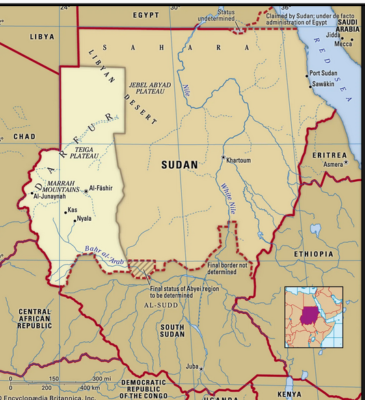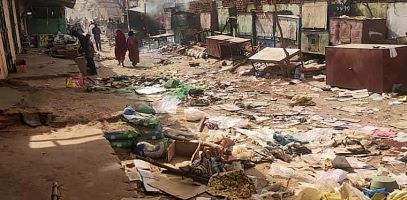
Is America becoming Exceptional? No.
Is America becoming the last best hope of humanity? No.
Is the President of the United States becoming Commander in Chief and Leader of the Free World? No.
Could all these questions be answered in the reverse due to the war in Iran? Yes.
War provides an opportunity for leadership not always available in peacetime. Suddenly armchair and ivory tower discussions become an immediate physical reality. The decisions made really matter. Now! Does a person have the right stuff to go into the arena and rise to the occasion or is he limited to playing “I want to be a macho macho man” in professional political arenas?
The war in Iran provides a textbook chance to examine the role of the individual in history, to examine the path not taken.
PERSIANS
Demographically, the overwhelming majority of people in Iran are Persian. Even Ted Cruz knows that as was made clear in a memorable debate with Tucker. The Persians take great pride in their pre-Moslem heritage just as Egyptians do in their pre-Moslem heritage. In this sense the Iranian theocrats have attempted to layer a new civilization upon the Persians following the takeover of the country in 1979 just as the Arabs did when then swept across the ancient Near East and northern Africa in the 7th century CE settler colonialism. The pyramids are a little more difficult to make disappear.
The Persian people are still around. The new civilization they are attracted to is the American one, the very one the theocratic Iran continually chants “Death to America.” Many Persians have voted with their feet to come to the United States. Many more would if they could.
In the op-ed piece “The Iranian Revolution Guard Who Loved ‘Titanic’” (NYT June 29, 2025, print), Nicholas Kristof recounts one conversation with a member of the Iranian Revolutionary Guard admittedly a few decades ago. Standing surrounded by “Great Satan” signs, the guard confided that his favorite movie was “Titanic” (the power of “soft power”). He said to Kristof
“To hell with the mullahs. If I could manage it, I’d go to America tomorrow.”
Kristof commented that the Persian people are seething all the more today with frustration and misrule at the oppression and misrule of the Iranian theorcrats. He notes that the Persian people are proud of their ancient civilization and know that their biggest problem is that they are led by extremists.
REGIME CHANGE
The Iranian theocrats are well aware that they are not loved by the people they rule. Part of the reason for the Israeli success in its pinpoint strikes against Iranian theocrat targets was the information it had from people of the ground. Instead of thinking about 007 spies, we should recognize that that Mossad had a wide network of local spies consisting of disaffected Persians who have had enough of the oppressive rule by Iranian theorcrats. Persians have been eager, willing and able to provide Israel with information it needs.
The reaction to no one’s surprise by the Iranian theocrats has been a crackdown on the Persians who aided the Israelis. Shades of ICE without the alligators! They have engaged in sweeps, passed fast-track laws to expand the use of the death penalty, and held quick trials. As one Persian noted, “The regime’s main fear is that people will perceive it as weak. Because if people know it lacks power, they will revolt” (quoted in “Iran Seeks the Public’s Help in its Push to Root Out Spies and Infiltrator” (NYT June 29, 2025, print).
So far there is no leader to take on the Iranian theorcrats as there was in Putin’s Russia (see “Suspense Builds in Iran as Theocracy Staggers,” (frontpage, June 30, 2025, NYT print). Thomas Friedman observes the Iranian theocrats only know how to repress their own people. Meanwhile the great Persian civilization is destitute, broken, and miles behind the rest of the world. He comments, “Israel is the kind of democracy that Iran’s secular educated elite — part of a rich Persian civilizational legacy — hope this war will pave the way for in Tehran” (“If This Mideast War Is Over, Get Ready for Interesting Politics” (June 26, 2026, NYT print).
AMERICA BOMBED THE WRONG TARGETS
The military operation was flawless. It demonstrates the professional excellence in the military. It shows what can be achieved when the stupidest Secretary of Defense in American history. It also shows the longterm thinking and planning which into the operation without the moron who does not even know about D-Day, the Six Day War in 1967 by Israel, yet alone Washington crossing the Delaware is in charge.
Still for all the talk about regime change, the wrong targets were bombed. True there are Constitutional issues to be addressed about this unilateral bombing by the United States taking advantage of what Israel had achieved. Remember how after 9/11 Trump had to get in the act to make himself the center of attention about the height of the Trump building in lower Manhattan and his time at Ground Zero.
Putting aside his need for the camera, let’s consider what might happen if the buildings and facilities of the Iranian theocrats were bombed now. Suppose the offices and bases of the
Intelligence Ministry
Elite Quds force
Islamic Revolutionary Guard
Basij militia
were destroyed. Suppose the instruments of power to suppress and repress the Persian people were destroyed. Suppose the Persian people had the opportunity for their own “Arab” spring or color revolution. Suppose the Iranian theocrats were removed from power by the Persian people themselves.
1. Persia would be welcomed into the Western community. Sanctions would be dropped. Travel and communication would be facilitated.
2. Persia would open its nuclear facilities for inspection and an agreement would be signed.
3. Funding for the axis of resistance, or what’s left of it, would cease.
4. Drones would no longer be shipped to Russia for use against Ukraine.
5. The oil spigot to China would be at risk thereby complicating the plans to invade Taiwan in 2027.
In short the entire map of the Middle East would be redrawn. But the American president is not interested in making the world safe for democracy. He isn’t even interested in making the United States safe for democracy.







